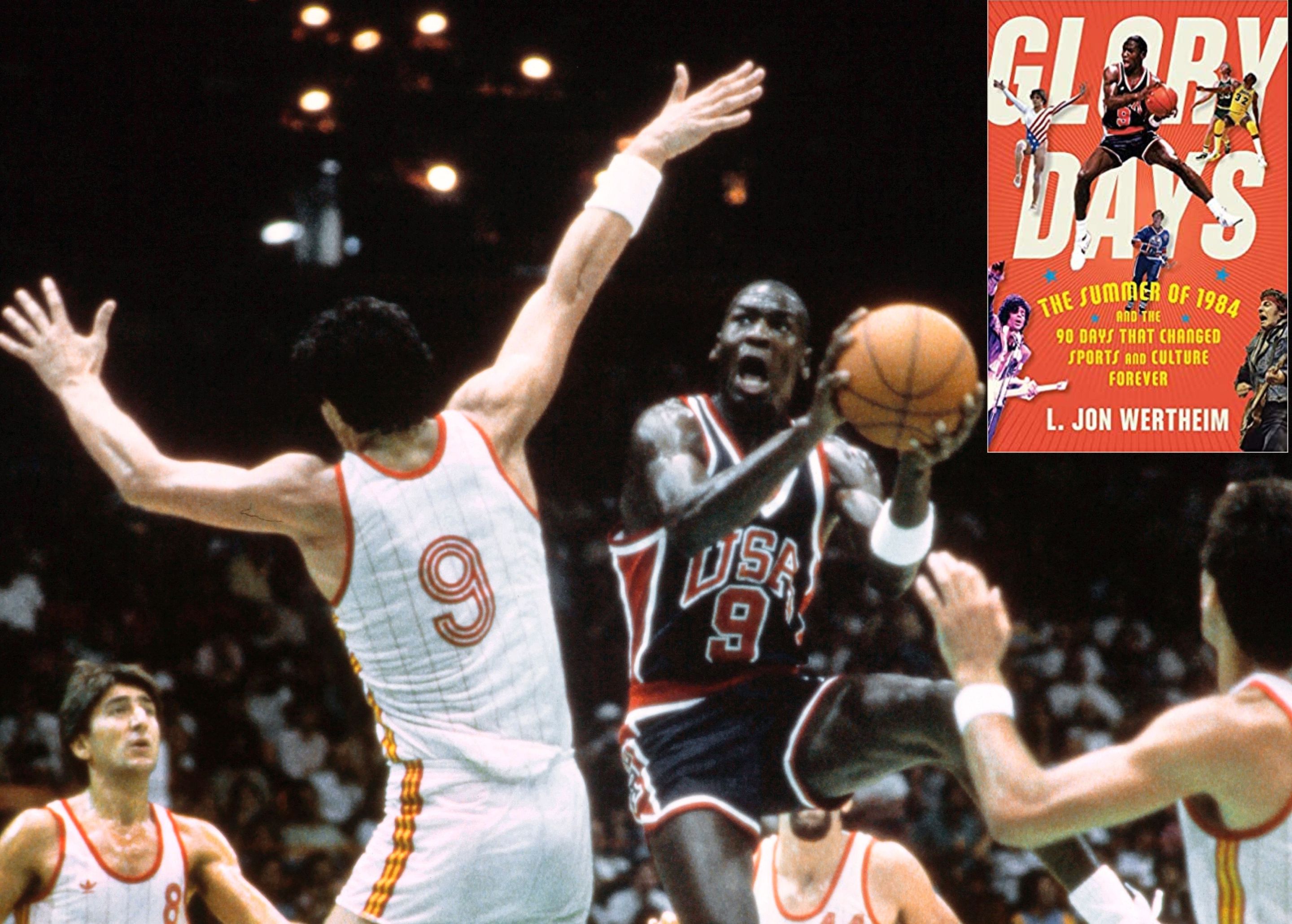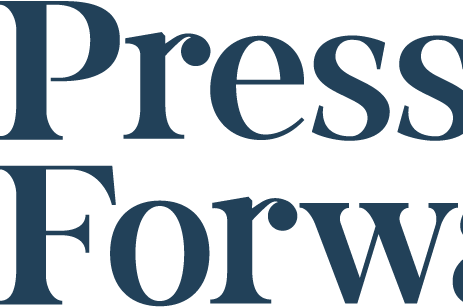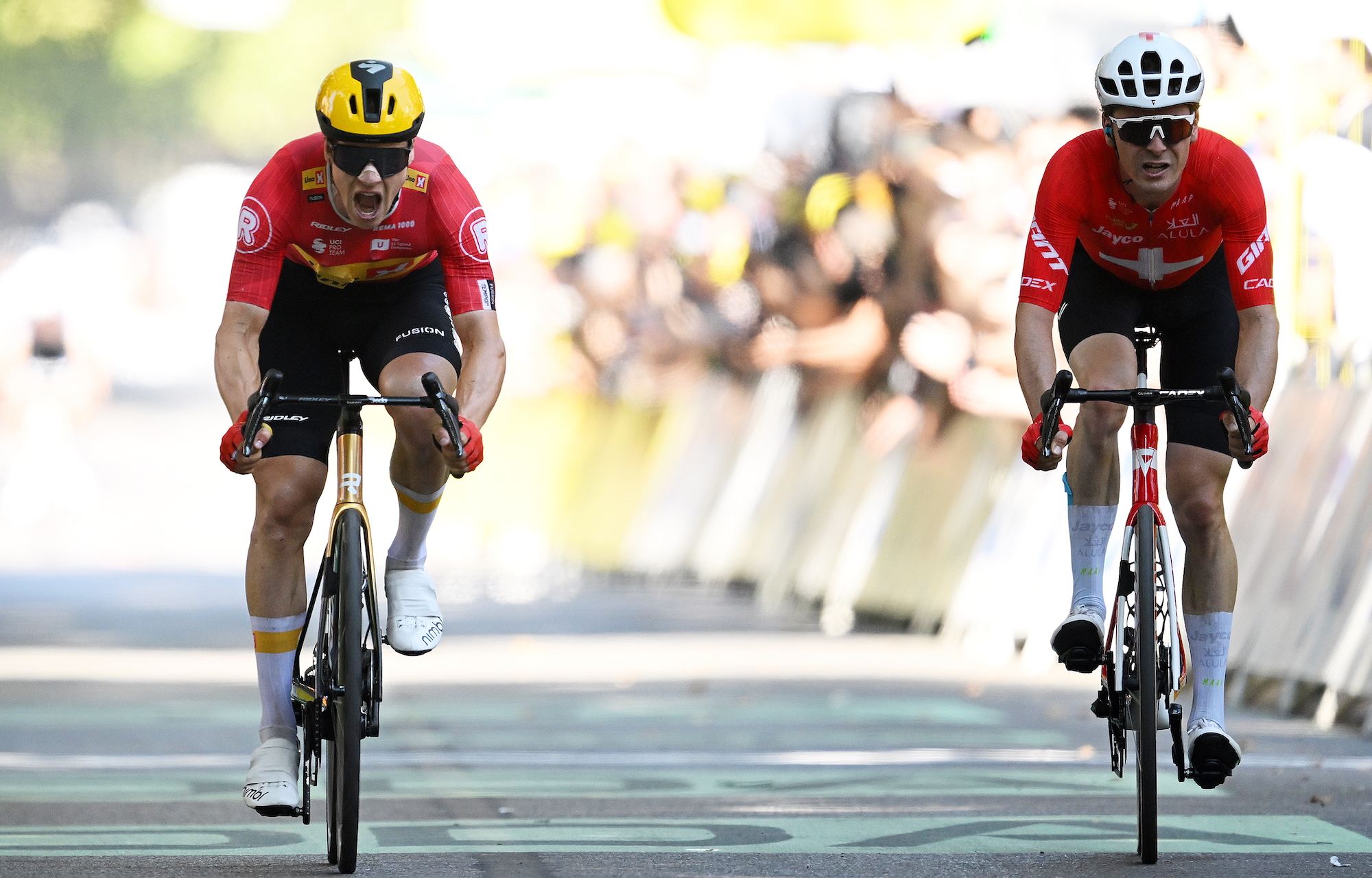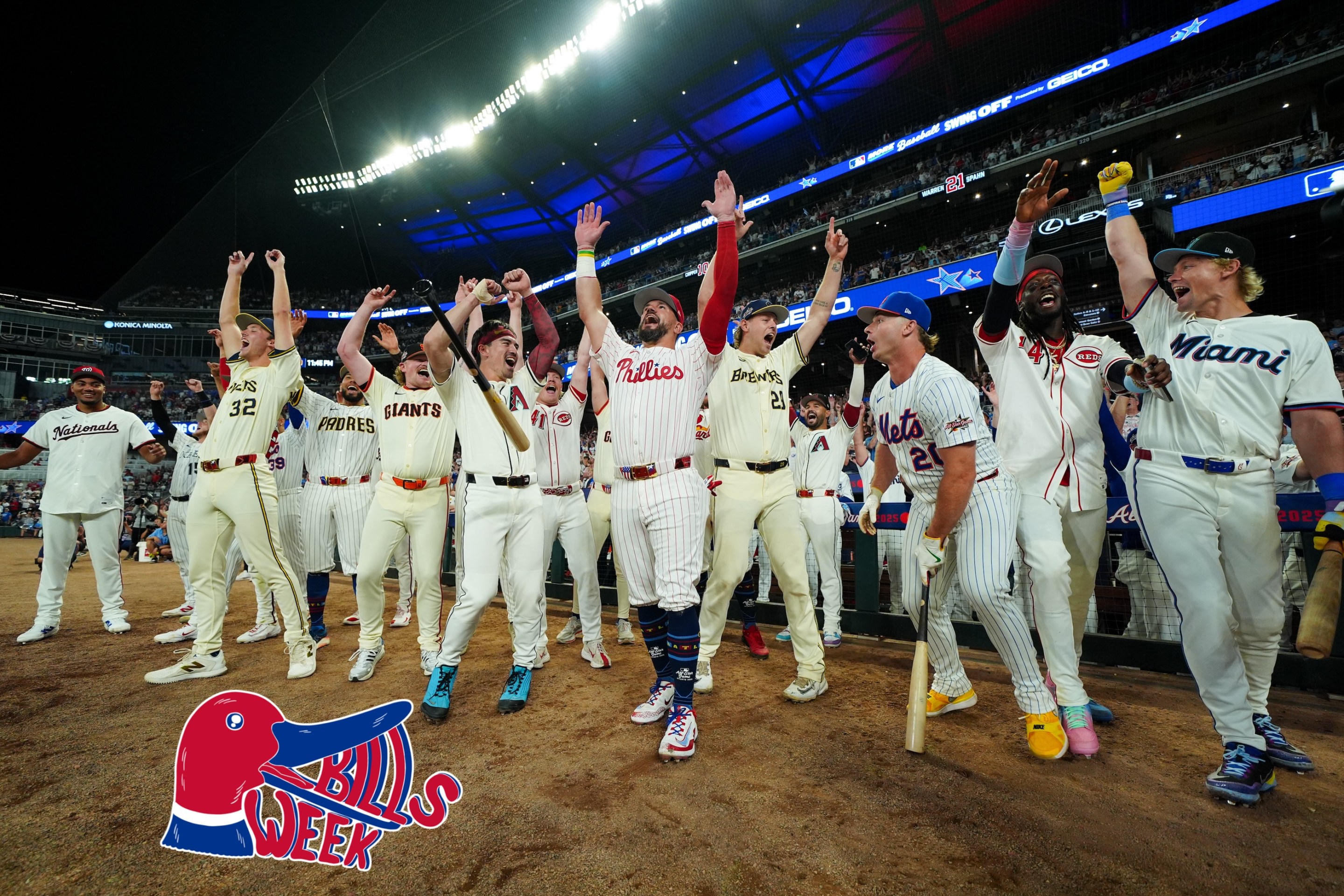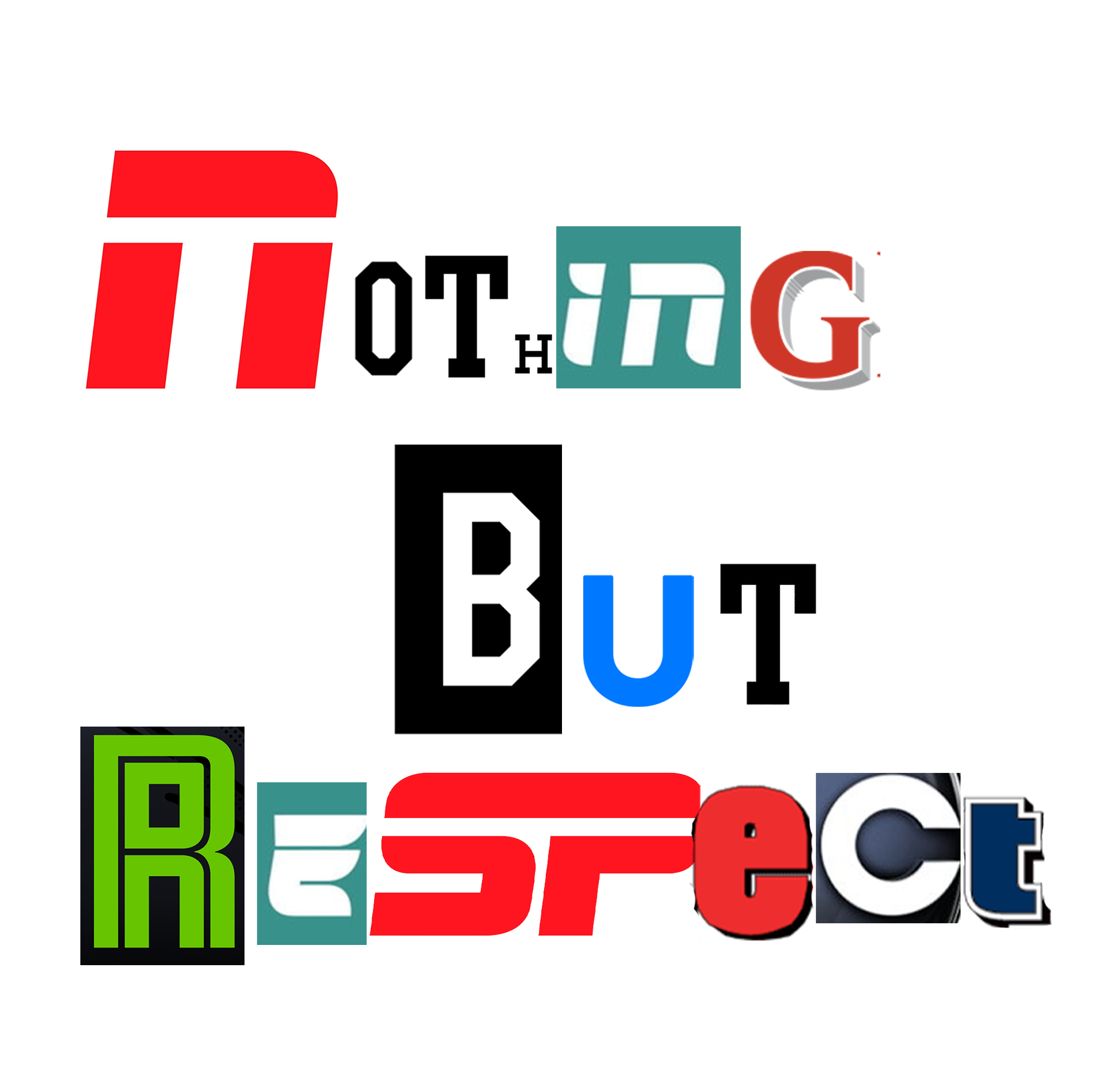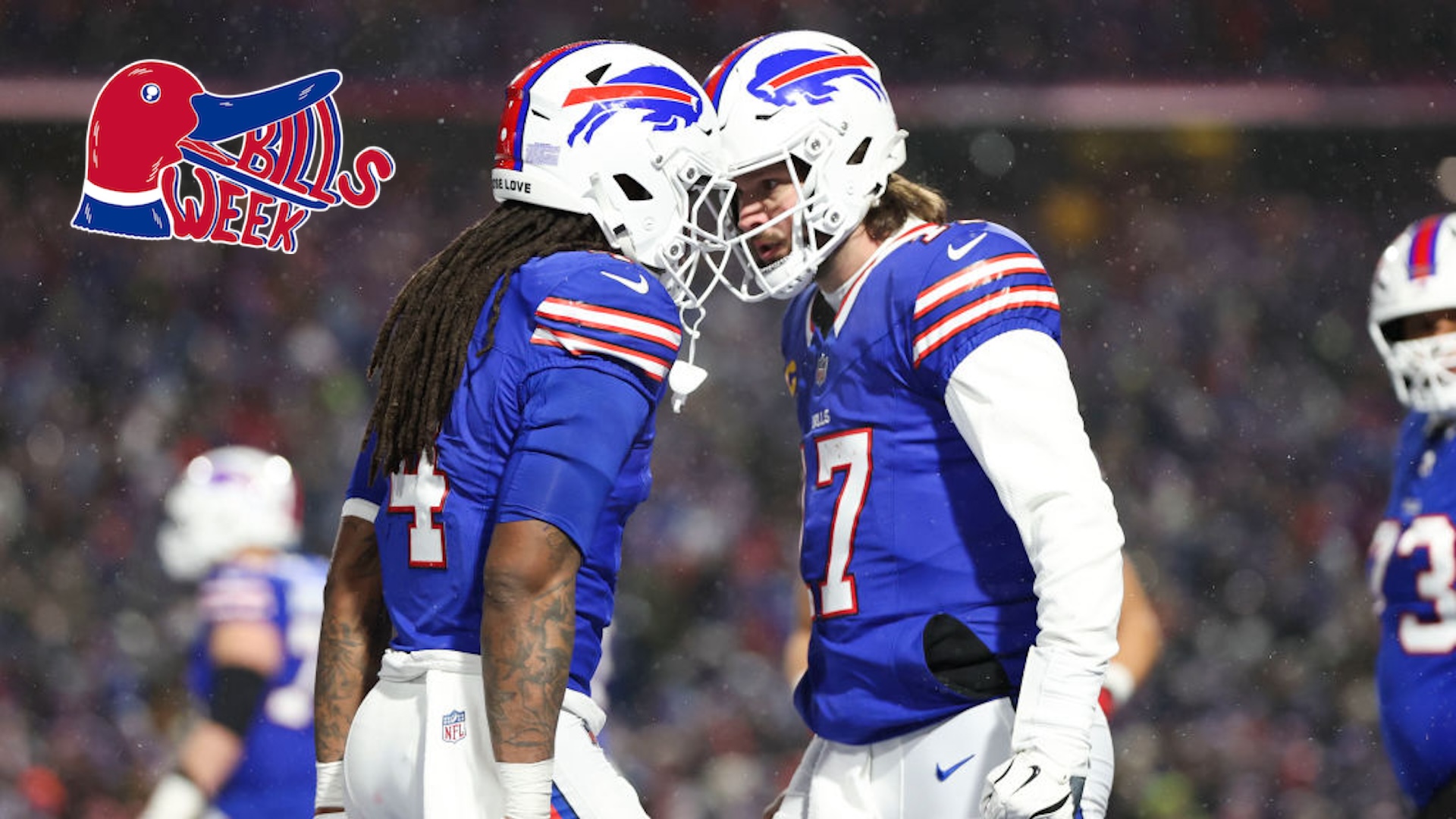On its face, it was a benign American summer. Big budget movies filled the theaters. Sugary pop songs wafted from the radio. An elderly woman asking “Where’s the Beef,” was a national laugh line. Ronald Reagan Era was in full free-market, take-cutting bloom, a few months before his resounding re-election.
But in retrospect, the June-July-August of 1984 marked a pivotal season, 90 days that would change the country. Americans fell in love with the personal computer; and realized a universe of television channels beyond the three major networks. Bruce Springsteen and Prince would release the albums—Born in the USA and Purple Rain—that would vault them to a new plane of celebrity. This transformation was especially pronounced in sports.
Compressed in the Summer of 1984: Michael Jordan was drafted by the Chicago Bulls, won an Olympic gold medal, and lent his name to a signature shoe. Magic Johnson and Larry Bird faced off in the NBA Finals for the first time, cementing their rivalry—to the delight of the league’s new visionary commissioner, David Stern. Donald Trump would—as owner of the USFL’s New Jersey Generals— use sports to become a national figure, while Vince McMahon would consolidate pro wrestling, bringing it in from the mainstream. I
In the following excerpt of Glory Days: The Summer of 1984 and the 90 Days That Changed Sports and Culture Forever, the author Jon Wertheim writes about the ascent of Michael Jordan, who was no longer a college player and not yet a pro.
In Indianapolis, a popular 1984 parlor game entailed coming up with the best comparison for the Hoosier Dome, the white monstrosity that had sprouted to blight the city’s skyline. It’s like a giant biscuit made from scratch. No, it looks more like a giant pile of white deer shit. The indoor venue was built with the intent of enticing a professional football team to relocate to town—and on those grounds, it was stunningly successful. On March 28, 1984, the Colts organization had loaded up a fleet of moving vans, left Baltimore under cover of darkness, and decamped to Indianapolis.
But with the 1984 NFL season still weeks away, the first event held inside the Hoosier Dome was, appropriately, a basketball game. As Bob Knight, the unofficial emcee, told the crowd that night, July 9, 1984, “I heard today that basketball was invented in Springfield, Massachusetts, and that is true.” (Pause for effect.) “God had it invented there so we could import it to Indiana.” Deafening applause followed.
Knight and his minions had come to Indianapolis as part of a pre-Olympic summer barnstorming tour. In order to help the team coalesce into a unit, in order to simulate real competition under international rules—and in order to get them the hell out of southern Indiana in the summer—USA Basketball had arranged for a series of games against makeshift teams of NBA players. Like a summer concert tour, the circuit threaded its way through an assortment of cities, some (Minneapolis) more logical than others (Iowa City?).
Apart from offering an entertaining summer basketball exhibition, the games doubled as an exercise in patriotism. Knight had already stressed this aspect with his players. Time and again, he reminded them that they were playing as representatives of America, which, as the coach put it, was one of the great civilizations in world history. Knight also constantly reminded them of recent Olympic basketball history. Though 12 years had elapsed, Knight often invoked the gold-medal game in the 1972 Olympics, when the Russians “won” an atrociously officiated contest 51–50, the outcome so dubious and controversial that the American players never accepted their silver medals.
With the Soviet boycott of the 1984 Games, there would be no Cold War flashpoint or baked-in rival this time. Still, these were our boys—the same age as soldiers—going off to do battle in an international theater, representing their country and wearing uniforms emblazoned in red, white, and blue.
This patriotic strain was especially vivid in Indianapolis on this night. It was the Monday after Fourth of July weekend. And the unit was led by Knight, a man nicknamed the General, who had started his coaching tour of duty at West Point and fancied himself a military historian. The ragtag mix of NBA players forming the opposition were coaxed into interrupting their summer on the grounds that they were fulfilling a patriotic duty, serving as sparring partners for the American unit.
At the entrance to the Hoosier Dome, local Girl Scout troops handed out miniature American flags to the 67,596 fans who attended, at the time the largest crowd ever to watch a basketball game indoors. During the pregame ceremonies, Knight welcomed the crowd and then handed the stage over to none other than Ronald Reagan. The president had taped a message that played on the video board, declaring that Knight’s collection of players was “not just a team. They’re the American team.”
Amid all this patriotic (jingoistic?) fervor, few fans noticed a small interlude on the court. During the pregame warm-up, Michael Jordan, shod now in the Fastbreak model by Converse, the sponsor of the Olympic team, unspooled a series of jump shots. After one errant attempt, his ball squirted away from him, crossed the DMZ of half-court, and bounded into enemy territory, the opponent’s side of the floor.
It found its way into the hands of Larry Bird. Fresh from winning the NBA title a few weeks earlier, Bird had, somewhat grudgingly, paused his off-season ritual—consisting mostly of beer drinking and fishing—to take part in this exhibition, a few hours’ drive from his famed hometown of French Lick, Indiana.
For Bird, though, there were no exhibition games. Only competitions. Jordan wore a sheepish, congenial My bad, Larry, smile as he came to retrieve his ball. Bird, the NBA’s reigning MVP, was less congenial. Sneering dismissively, he kicked the ball over Jordan’s head and back to the other end of the court, the indoor equivalent of Get off my lawn, kid. Jordan walked back, shaking his head, interpreting it as a bit of validation. He was already worthy of Larry Bird’s mind games. See you in the NBA, pal.
That night, the U.S. women’s basketball team served as something of a warm-up act. Led by Cheryl Miller—whose kid brother Reggie would be drafted by the Indiana Pacers three summers later and leave as the franchise’s most decorated pro basketball player—the U.S. women cruised to a 97–54 win over a patchwork team of former college players. “Not much to complain about,” said the coach, Pat Summitt, who had turned 32 a few weeks before.
As for the main event, the men’s game, Bird tricked Jordan into a pair of quick fouls and the NBA All-Stars—featuring most of Bird’s Celtics teammates as well as the Detroit Pistons’ star guard Isiah Thomas, who had played for Knight at Indiana—took a 16–10 lead. But then the Olympians took over, benefiting from superior depth, cohesion, and ambition. They pulled away in the second half and won 97–82. Bird had 14 points. Jordan had 12. Seven months later, when Jordan next appeared at the Hoosier Dome, he and Bird would be on the same side of the court, teammates representing the Eastern Conference at the NBA All-Star Game.
Apart from simulating battle, the barnstorming tour gave rise to a certain esprit de corps, a chemistry among the unit. Knight experimented with lineups and was intentionally vague and erratic about his rotation.
Players also experienced Knight’s brutal, military-style authority. Within a few years, autocrats like Knight would be subject to the equivalent of court-martial—“You can’t handle the truth!” we might have later said—for breaches of basic human decency. But in 1984, Knight’s M.O. was still acceptable, perhaps especially heading into an international competition.
For Knight, basketball was never about missed shots or made shots. It was about manifestations of character. Were you tough and durable and courageous and unswerving in your convictions? Or did you play with what Knight perceived to be the twin curses of softness and indecision?
Some players recoiled from Knight’s style. (That included Larry Bird, who, recruited by Knight in the mid-70s, had gone home after a homesick month on campus in Bloomington and then transferred to Indiana State.) Others responded to it. Jordan was not merely unbothered by Knight; he warmed to his discipline and his combustible personality and saw value in both. It was all in service of winning. And what’s wrong with the alpha acting like the alpha?
Patrick Ewing would later tell the story that one night he and Jordan began play-wrestling in the living quarters. Nothing malicious, just two bored and athletic kids fooling around. Though Jordan spotted Ewing six inches and perhaps 50 pounds, he got his man in a headlock. Ewing capitulated. Neither thought much of it, but the next day Ewing couldn’t move his neck.
Worse, he had to tell Knight what had happened and that Jordan had been the culprit. “Coach Knight was mad,” Ewing recalled to the writer Jack McCallum in his excellent book Dream Team. “But only at me. Michael? Nothing happened to him. Nothing ever happened to Michael.”
Which wasn’t entirely true. Knight went after Jordan plenty. But sometimes it was to test Jordan’s resolve. Other times it was to send a message: No one is above the law. (On these occasions, Knight would sometimes warn Jordan what was coming.)
Jordan’s college coach, Dean Smith, was a strong authority figure who brooked no bullshit. But this was at an entirely different level. Which was fine by Jordan. Asked—as he invariably was throughout the tour—to compare coaches, Jordan smiled and offered a winning line: “The only different thing is the vocabulary. From Coach Smith I learned the four-corner offense. From Coach Knight I learned the four-letter word.” (Wait for laughter.) “I’ve heard some of the words before that he’s used, but never from a coach.”
Referring to Knight by his first name, he continued, “Bobby doesn’t scare me. I’m taller than him.” (Wait for more laughter.) “But I see what gets him mad, and I make sure I don’t do it. He’s taught us all a lot, and his way of getting a point across doesn’t take the fun out of this. Now, if you ask me whether I’d want to play for him for four years, I’d have to think about it.”
Jordan was more amused than anything else by Knight’s eruptions. He often confided in George Raveling—who had known Knight since the late 1960s and counted him as a friend—jokingly referring to Knight as “your boy.” As in: You’re never going to believe what your boy did today. Or: Check out what your boy called me this morning.
All bullies, though, need a target, and Wayman Tisdale, a silky lefty forward from Oklahoma, was a particular victim of Knight’s. Confidants of Knight’s explain that he didn’t hold Tisdale’s college coach, Billy Tubbs, in especially high esteem. Tubbs’s teams played a high-scoring, defense-free style, absent of structure. (By received wisdom, Tubbs played comparably fast and loose with the NCAA rule book.) Knight was going to impose discipline and, by proxy, repudiate Tubbs and his slapdash approach to basketball.
During a practice before an exhibition in Greensboro, Knight stopped the session and demanded a black Magic Marker. He then bent down, wrote an X on the floor, and added a date. As Knight knelt on the court for this art project, the players exchanged quizzical looks. When the coach finished, he declared, “I just wanted to mark the time and place that I first saw Wayman Tisdale take a charge.” More than once, the General kicked Tisdale out of the gym, leaving the player in tears. Asked what he thought of Knight’s methods, Tisdale would say, “When I go back to Oklahoma, I’m gonna find everyone I used to think was mean, and I’m gonna hug ‘em.”
While it wasn’t quite the Harlem Globetrotters vs. the Washington Generals, with scripted outcomes and storylines, everyone knew the rules of engagement for these exhibition games. The NBA players were expected to try hard, but not their hardest, and keep the games close. They were not supposed to win. So they didn’t. But the games were often competitive, sometimes intensely so.
On July 12, the Olympians played an exhibition game in Milwaukee. Before the game, Tim Hallam, a young staffer in the Bulls’ public relations office, drove up from Chicago with a photographer. His task: get Michael Jordan to pose for a portrait photo in a Bulls uniform. Hallam introduced himself to Jordan for the first time and was impressed when the kid smiled, looked him in the eye, and seemed to grasp the exercise. Hey, a team needs to sell tickets. I’m the new draft pick. This comes with the territory.
But with tip-off looming, there was no time to set up proper lighting. So there, in the middle of the locker room in Milwaukee, surrounded by teammates, Jordan changed out of the Olympic uniform and into the Bulls uniform and sat for the damn photo. While he would later razz Hallam about this imposition on his time—this, the very first of countless requests the Bulls’ public relations staff would make over the years—on this night, Jordan could not have been more accommodating.
While Jordan was posing for the photo shoot, Knight was in the other locker room, encouraging two of the NBA stars, Mike Dunleavy and Doc Rivers, to knock his players around a lot. They obliged. So did their teammate, Mickey Johnson, of the Golden State Warriors, who took advantage of the tour’s unlimited fouls policy, committing 13 infractions. But when the game turned from physical to violent, Knight reconsidered, screaming at the referees to get control of the game: “Too much is at stake.”
In the second half, Jordan went in for a breakaway dunk. Dunleavy swooped in, extended his right hand, and raked Jordan across the face. After thudding to the ground, Jordan popped up like a jack-in-the-box, glowering and looking to fight Dunleavy. By the time he was restrained by teammates, he was already cocking a fist. “I didn’t come out here to not play hard,” Dunleavy said. (Seven summers later, Jordan would get his revenge, winning his first NBA title in 1991 as the Chicago Bulls defeated the Los Angeles Lakers, a team coached by ... Mike Dunleavy.)
After the game in Milwaukee, Knight was still hot. He declared Charley Vacca, a college official, “the most incompetent sonofabitch I’ve seen referee ... What do you want me to do, sit on my ass and let a million-dollar player’s career be ruined by some asshole with a whistle?”
Apart from assholes with whistles, the tour was a smashing success that achieved its goal. Some games were blowouts, the team playing in harmony. Other games were close, and the Olympians were forced to show some mettle, scoring baskets and making critical stops on defense. But the Olympians played against the best and brightest in the NBA (Bird in Indianapolis; Magic Johnson in Minneapolis; Clyde Drexler in Iowa City; Alex English and Kiki Vandeweghe in Phoenix). In the end, the Olympians won all eight games; roles and responsibilities became more clear; collectively and individually, confidence swelled.
But the tour also did something else: it highlighted the lavish skills of Michael Jordan. The games foreshadowed just how seamlessly Jordan’s game, his explosive athleticism, his position—for that matter, his disposition—would translate to the NBA.
Jay Bilas had finished his sophomore year at Duke and played sporadically on the basketball team. He’d harbored interests beyond basketball and that summer served as a production assistant for ABC for Olympic basketball telecasts. While most of his work came at the L.A. Games, Bilas was also assigned to work some of the exhibition games between the Olympians and the NBA players.
Having played against Jordan at the rival school less than half an hour away, Bilas had seen Jordan put up 20 points a game in the Atlantic Coast Conference. He was unsurprised when he attended a pregame practice in Minneapolis and it was abundantly obvious that Jordan was the best player on the team.
But then the game started. Jordan was competing against the likes of Magic Johnson, Kevin McHale, Isiah Thomas, and Mark Aguirre. “He was still the best player—by far,” says Bilas. “It was pretty clear that there wasn’t anybody in the NBA or internationally that could hang with him. Jordan did stuff where it was like Are you kidding me? And I saw him do it in college a little bit, but this was a different level. I remembered, as a kid, people used to say that when Mickey Mantle made contact, his bat made a different sound from everyone else’s. It was like that. He was making moves and you were like It’s just different. No one else is doing that.”
Toward the end of the tour, the U.S. team played a collection of All-Stars in Phoenix. After Jordan dropped 27 points and the Olympians won their eighth-straight game, 84–72, the opposing coach was visibly slack-jawed. How good was Jordan? “He’s as gifted a player as any I’ve ever seen play ball,” responded Pat Riley, the Lakers’ coach—who was, bear in mind, just a few weeks removed from watching Larry Bird, Kevin McHale, Magic Johnson, James Worthy, and Kareem Abdul-Jabbar duel for seven games in a classic series. “What happened here and then through the Olympics will only make him better. I don’t think he realizes how good he really is.”
Glory Days: The Summer of 1984 and the 90 Days That Changed Sports and Culture Forever is available for pre-order now.
